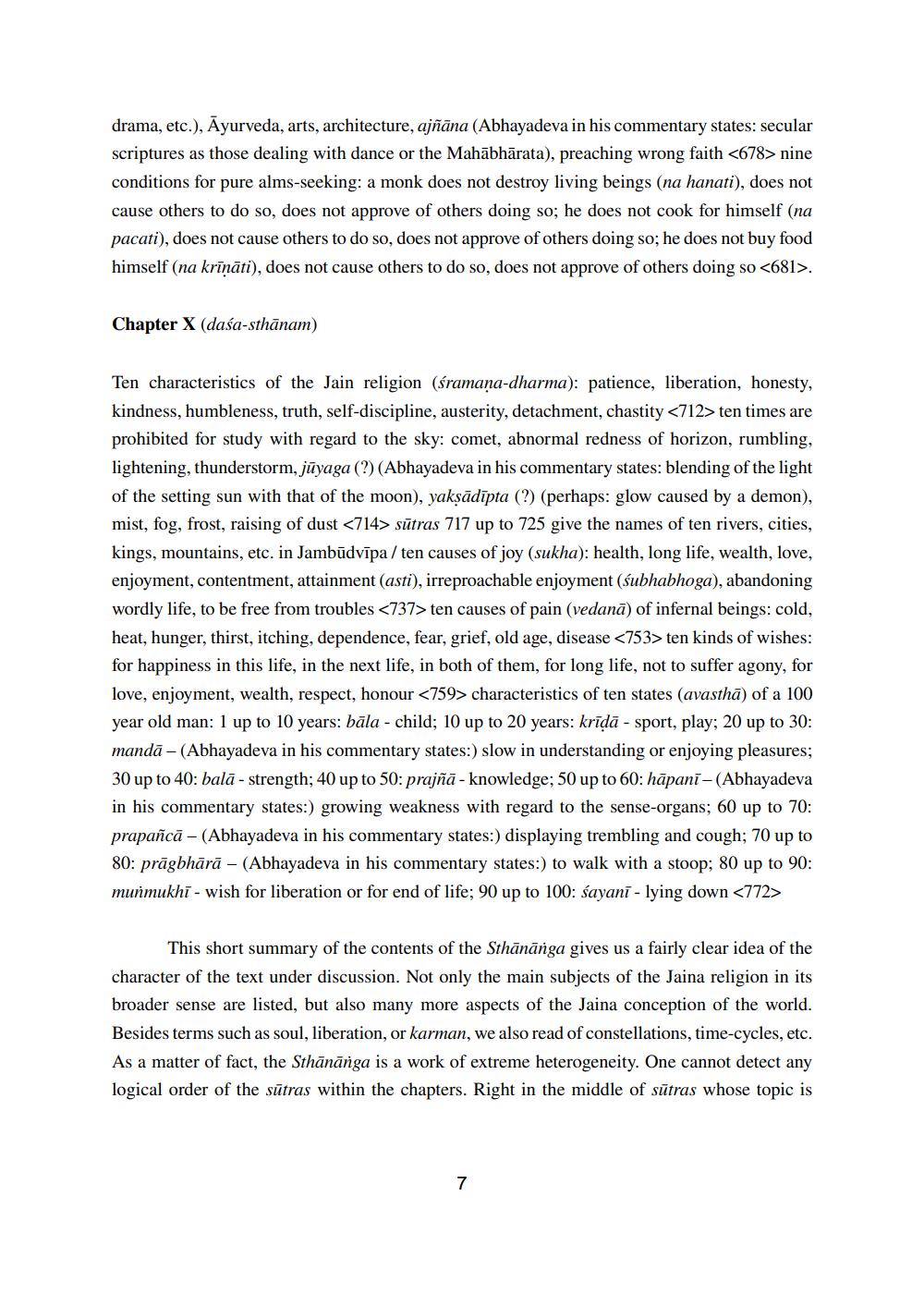Book Title: Sthanangasutra Author(s): Kornelius Krümpelmann Publisher: ZZZ Unknown View full book textPage 7
________________ drama, etc.), Ayurveda, arts, architecture, ajñāna (Abhayadeva in his commentary states: secular scriptures as those dealing with dance or the Mahabharata), preaching wrong faith <678> nine conditions for pure alms-seeking: a monk does not destroy living beings (na hanati), does not cause others to do so, does not approve of others doing so; he does not cook for himself (na pacati), does not cause others to do so, does not approve of others doing so; he does not buy food himself (na krīṇāti), does not cause others to do so, does not approve of others doing so <681>. Chapter X (dasa-sthänam) Ten characteristics of the Jain religion (śramana-dharma): patience, liberation, honesty, kindness, humbleness, truth, self-discipline, austerity, detachment, chastity <712> ten times are prohibited for study with regard to the sky: comet, abnormal redness of horizon, rumbling, lightening, thunderstorm, jūyaga (?) (Abhayadeva in his commentary states: blending of the light of the setting sun with that of the moon), yakṣādīpta (?) (perhaps: glow caused by a demon), mist, fog, frost, raising of dust <714> sutras 717 up to 725 give the names of ten rivers, cities, kings, mountains, etc. in Jambudvipa / ten causes of joy (sukha): health, long life, wealth, love, enjoyment, contentment, attainment (asti), irreproachable enjoyment (subhabhoga), abandoning wordly life, to be free from troubles <737> ten causes of pain (vedana) of infernal beings: cold, heat, hunger, thirst, itching, dependence, fear, grief, old age, disease <753> ten kinds of wishes: for happiness in this life, in the next life, in both of them, for long life, not to suffer agony, for love, enjoyment, wealth, respect, honour <759> characteristics of ten states (avastha) of a 100 year old man: 1 up to 10 years: bāla - child; 10 up to 20 years: krīḍā - sport, play; 20 up to 30: manda-(Abhayadeva in his commentary states:) slow in understanding or enjoying pleasures; 30 up to 40: balā - strength; 40 up to 50: prajñā - knowledge; 50 up to 60: hāpani-(Abhayadeva in his commentary states:) growing weakness with regard to the sense-organs; 60 up to 70: prapanca - (Abhayadeva in his commentary states:) displaying trembling and cough; 70 up to 80: prāgbhārā - (Abhayadeva in his commentary states:) to walk with a stoop; 80 up to 90: murmukhi - wish for liberation or for end of life; 90 up to 100: sayani - lying down <772> This short summary of the contents of the Sthānanga gives us a fairly clear idea of the character of the text under discussion. Not only the main subjects of the Jaina religion in its broader sense are listed, but also many more aspects of the Jaina conception of the world. Besides terms such as soul, liberation, or karman, we also read of constellations, time-cycles, etc. As a matter of fact, the Sthānanga is a work of extreme heterogeneity. One cannot detect any logical order of the sutras within the chapters. Right in the middle of sutras whose topic is 7Page Navigation
1 ... 5 6 7 8 9 10 11 12
